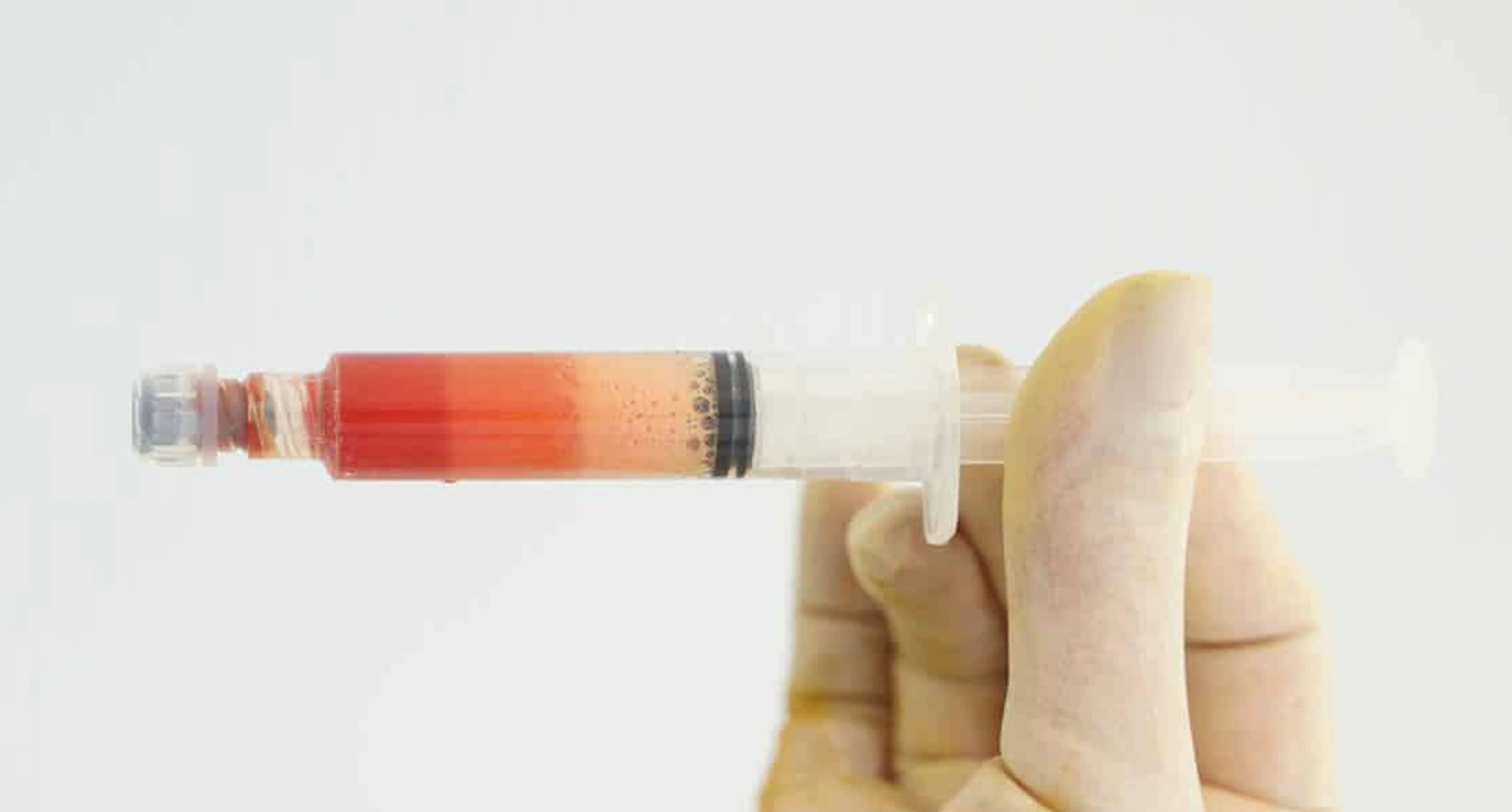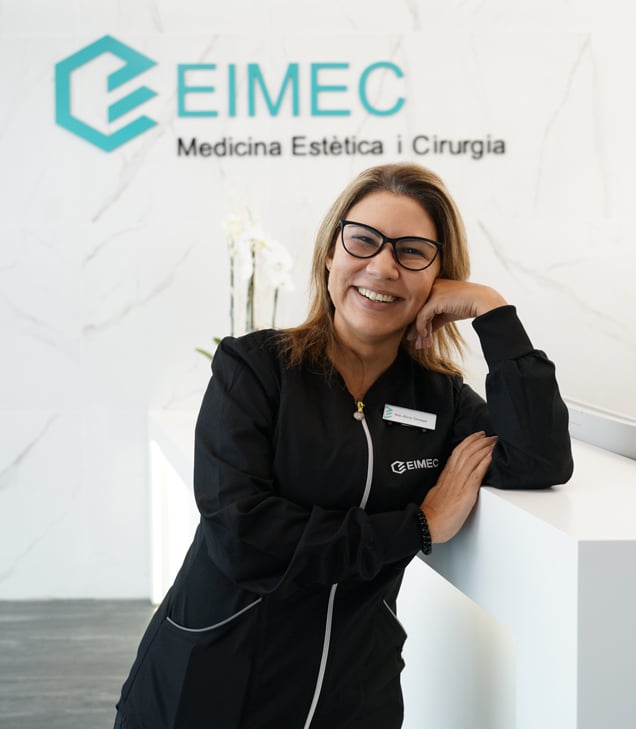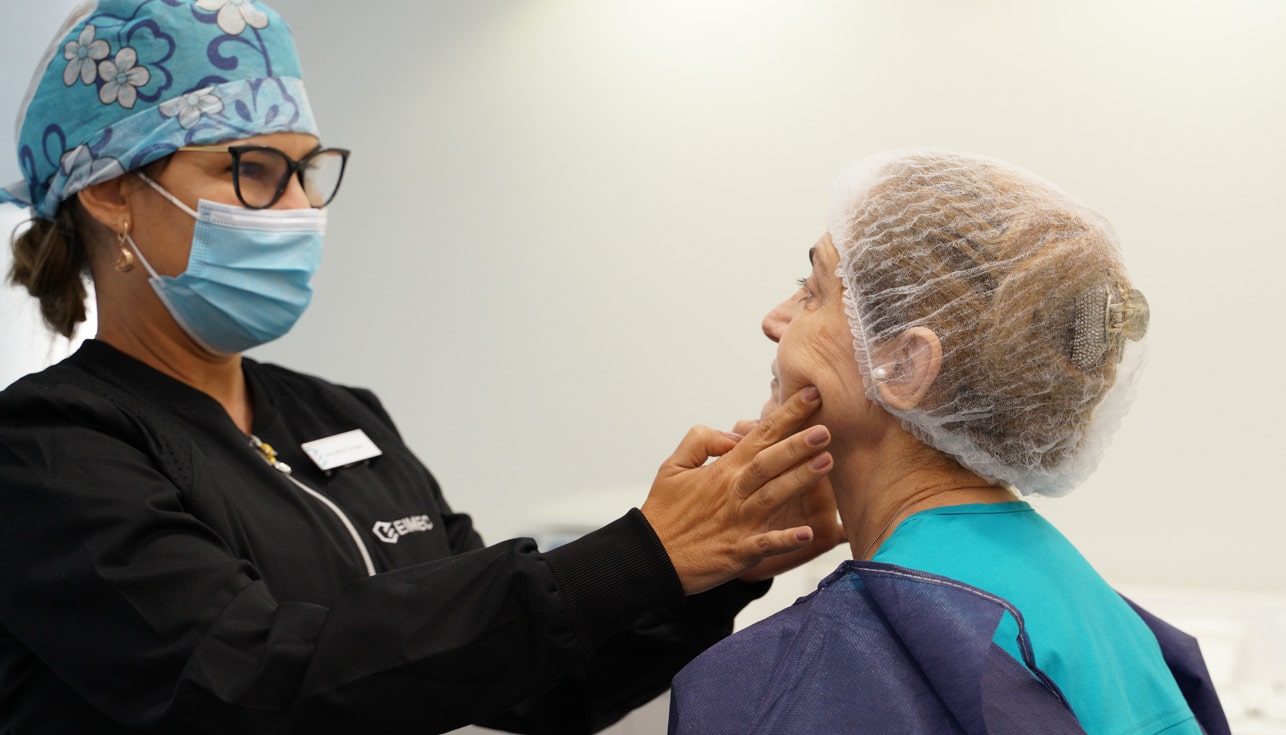
We spoke with Dr. C. Alicia Tamayo, chief of Plastic Surgery and Caumatology at the Hermanos Ameijeiras Hospital, Cuba.
Taking advantage of her stay in Barcelona as a teacher for CEMEF22, our study coordinator, Dr. Paula Pifarré talks to Dr. Alicia Tamayo Carbón about the advances in facial lipotransfer with stem cells.
Tamayo is a surgeon, specialist of I and II degree in Plastic Surgery and Caumatology since 2008, head of the service of Plastic Surgery and Caumatology of the Hermanos Ameijeiras Hospital (Cuba), as well as teacher and researcher, with more than 70 articles published in national and international journals.

Dr. Alicia Tamayo Carbón at EIMEC.
-It is a surgical procedure, it requires an operating room to be performed under sterile conditions. It is an autologous fat transplant: the subject himself is the donor and at the same time the recipient. Fat is obtained from an anatomical region where it is left over, preferably the infra umbilical region, processed and grafted. It is a transplant, but with minimal access. It is a safe procedure, it is not disabling, has minimal incisions and therefore patients recover very quickly.
-We are talking specifically about facial lipotransfer, because lipotransfer is when we graft adipose tissue from one region of the body to any other. In this case we are referring to the face, specifically facial rejuvenation, although it has multiple indications, but when it is facial, it is an outpatient procedure.
-Adipose tissue is an organ but it has a structure with its parenchyma and stroma. The parenchyma is composed of adipocytes, which are the adipose cells that provide volume. If I intend to obtain volume in the recipient area, which in this case would be the face, then this tissue is practically not processed, it is only obtained, decanted and grafted at facial level. But together with these adipocytes there is another gigantic cellular group: there is the stromal vascular fraction that is contained in all the perivascular tissue. When this adipose tissue is emulsified, transferred and the adipocytes are fractured, all these cellular elements are disaggregated. This is when we talk about nanoFat, which is regenerative therapy because it is richer in stem cells derived from adipose tissue.

From the physiological point of view, it is a transplant where adipose tissue will be obtained from one area and placed in other areas where it will be nourished at the expense of the area that received it. It is going to be nourished at the expense of the blood vessels that are in these receptor zones. In fact, a whole series of principles that must be followed in order to achieve the greatest survival of the graft depend on it. When the nanofat is injected, since it does not have adipocytes, it does not provide as much volume; however, it is still called liporansfer because the vehicle to place these stem cells in the new site is precisely the adipose tissue, even if it is emulsified.
-They can also be combined. When this adipose tissue that I am going to place for volume is enriched with this emulsion rich in stem cells, it increases the survival of the tissue that I am transplanting, because it has an anti-apoptotic, anti-inflammatory, regenerative and angiogenic effect. All this leads to greater graft survival.
“There is never rejection because it is autologous, that is one of the main advantages”
-You were asking me advantages? It is autologous, it is available. Almost all of us have an area of adipose tissue, in some patients it is more difficult to find it, but we all have a donor area of adipose tissue. It is accessible, that is, it is easy to access because it does not imply entering a cavity since it is limited to the subcutaneous cellular tissue. It is moldable, we can mold it to the shape we want to obtain, and it is safe. It is histocompatible and it is also economical.
-It is an inexhaustible source, the organism.
-Both ways. Knowledgeable patients, of which there are more and more these days, are looking to rejuvenate without scarring. This style of going to a plastic surgeon to have large skin receptions is no longer the priority. Almost everyone wants to avoid aging, they start therapies from a very early age. From the age of 25, patients want to stay young, so the ideal is to start placing their autologous products. The population is becoming richer from the point of view of theoretical knowledge and the current trend is towards autologous products, not synthetic ones, which, even if they are of high quality, are still a foreign body to which the organism can react.
There are also situations in which lipotransfer is not a choice, it is an indication, why? Because there are people who require too much volume and then it would be incompatible to fill all that with other substances such as hyaluronic acid, and it is preferable to do these large fillings with lipotransfer. There are also people who have an immune response due to a history of disease. In those cases it is preferable to place something autologous so as not to trigger an autoantibody response when there is an individual who is already sensitized by another disease.

-The face has superficial and deep fatty compartments. The deep ones tend to atrophy, in addition to the loss of bone support that is also reabsorbed, together with the flaccidity of the ligaments and the loss of collagen and elastin. All of this causes the soft part in front to descend. But what happens? The ones that atrophy are the deep ones. The superficial fatty compartments separate and descend, weighing down the skin that has already lost collagen and elastin. So it is very good to recover the deep fatty compartment so that the relationship between the continent content, which is the skin and the deep plane, is compensated and everything hangs less. This negative facial vector is recovered.
–Fat is reabsorbed in a percentage. It never survives 100%. In fact, this technique began in 1913 for facial reconstructions and fell into disuse, because the results did not last over time. It has been resumed since 2001, when the presence of stem cells was discovered. The principles of obtaining, processing and injecting adipose tissue have been perfected, in such a way that the survival rate has increased. Already 50% is achieved with certainty. When assisted with stem cells, 75% can be achieved. That is already an excellent result; we do not aspire to 100%. I wish we could reach that, in any case, what is preserved is permanent, unlike other substances that are reabsorbed.
Generally, the lipotransfer can be repeated up to 3 times. The filling effect is added, it is not to replace what was placed and that was reabsorbed, but the tissue that is placed is integrated to the recipient area. It becomes a structural fat that increases if you gain weight and decreases if you lose weight. The objective of repeating the process is to continue improving. Almost all patients seek improvement in skin quality with nanoFat, not so much volume but regenerative therapy.
It can be used as a primary method, alone, for complete rejuvenation or you can use it as a complementary method. When you do a surgery you can associate it to the lipotransfer and the results are much better.
-With toxin yes, with Hyaluronic Acid (HA) in this case it would not make sense because the filling effect is achieved with fat. But patients who have had HA placed, even when they have some alteration such as changes in skin coloration that darkens with some substance that has been previously injected, can improve with regenerative therapy.
-With fat we do biostimulation by having stem cells. For example, Platelet Rich Plasma (PRP) is used because it is rich in growth factors, in this case we have nanoFat, which is the emulsion of adipose tissue (which are stem cells), and we do the same biostimulation procedure. Just as we use a dermapen with a biostimulant or PRP, we can use nanoFat.
It can be combined with other biostimulants, but we consider that it is not necessary because this is already provided by the regenerative therapy of nanoFat, which is also ideal because it is autologous.
-Yes, there are several lines of research at the moment, but definitely yes. Just as PRP is used to enrich, nanoFat is used in the whole angiogenic process. There is a dilemma whether to place it before or during the hair transplant process itself, because by increasing the pressure in the graft area it is easy for the hair follicle to be expelled.
I do not have experience in hair transplantation but research is being done to decide the most opportune moment for its application. The regenerative effects have been demonstrated. Even the number of stem cells per patient. There are studies by flow cytometry where the percentage has been determined according to populations of mesenchymal or hematopoietic stem cells derived from adipose tissue and even more stem cells have been found than in peripheral blood after stimulating the bone marrow. It has an incredible regenerative potential.
-One problem is that patients always associate it with a fat face. When people talk about liptransfer they say ‘I don’t want to have a fat face’, and that’s not what it’s about. It is to replace what is missing, what was lost.
There are medications such as antiretroviral drugs that cause facial lipoatrophy, cases of very athletic patients who tend to lose facial fat, even cases of trauma: there are accidents that generate scars with a loss of volume. Cases of patients with lupus erythematosus that cause panniculitis and this causes atrophy… in all these cases lipotransfer is ideal. Much research has already been done and published inElsevier.